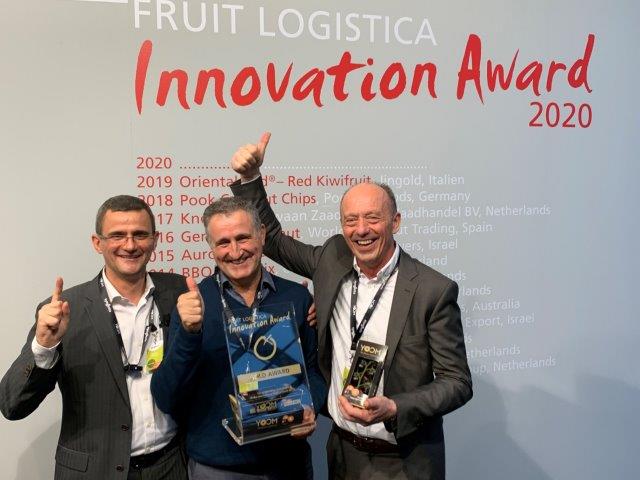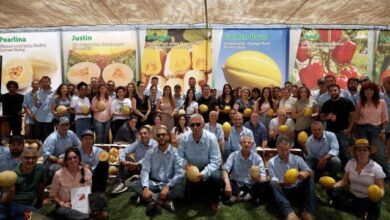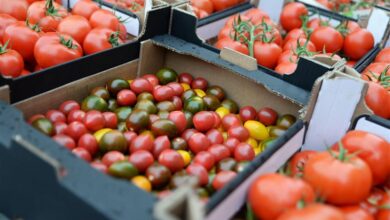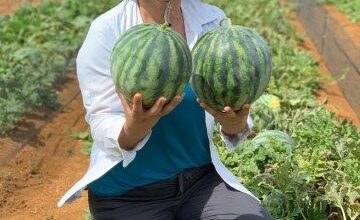Syngenta has shaped the vegetable seeds market together with its value chain
The vegetable seeds industry is a dynamic, sexy field, yet challenging and very complex


interview with arend schot, head of vegetable seeds for europe, africa & middle east; managing director for holland & israel; lior kushnir, vegetable seeds marketing manager, southeastern europe; paolo di lernia, head of marketing communications, vegetable seeds
the vegetable seeds industry is a dynamic, sexy field, yet challenging and very complex”, is how arend schot described the vegetable seeds field in an interview we held with him and two more syngenta reps, lior kushnir & paolo di lernia, at fruit logistica held in berlin this past february.
with 28,000 workers worldwide and annual sales of $13.6 billion, syngenta is one of the largest global group responsible for developing the greatest selection of vegetable seeds varieties.
arend has worked for 34 years at syngenta, and is responsible for the vegetable seeds market in europe, africa and the far east. as he puts it, this is a dynamic, sexy and profitable field, but is also quite complicated. syngenta has 2,500 different varieties, and introduces more than 150 new varieties annually, designed for various markets and segments (open field, greenhouse). according to arend, “in most cases we invent the market.” for example, the angelle baby plum tomato variety was developed by syngenta, and is now considered the most widely distributed variety in european retail chains and has in fact created the baby plum as a separate category.

size notwithstanding, syngenta views the growers as a central component of its development activity and introduction of new varieties, relying on their know-how and experience, paolo di lernia emphasizes, stating that “the grower shares his problems with us, and our job is to provide him with the solution.” arend noting that “we are the architects and the growers are the builders.” according to arend, syngenta’s role is to create the market for growers, so that “the process begins as we contact retail chains’ category managers, by presenting them with new products. once we have received their ok, we suggest to growers what they should grow in accordance with retail chain demand. that is also one of the reasons that syngenta reps come to the show, to meet with retail chain reps, growers and distributors.
fruit logistica was also an opportunity to present new products, including:
crisp delight – a new tasty, crispy watermelon, good in fruit salad since it retains its shape after being cut, without producing juice.

galiano – a small seedless pepper of the angelo variety. lior kushner notes that this variety was developed originally by gedera seeds. galiano is an exclusive syngenta product, just right for children, combining small size, attractive color and sweet flavor.
yoom, a premium purple cocktail tomato, with its umami flavor and high antioxidant content, won the tomato innovation awards held during fruit logistica.
according to syngenta reps, the process of introducing a new product takes about 10 years, from the concept stage to the sales stage, including development, trials, marketing process and infiltrating the market. the development process has recently added the requirement to meet sustainability standards, a demand coming from all parts of the value chain.
syngenta is committed to invest in solutions for sustainable agriculture with better soil management, using resilient varieties, and reduced fertilizer and crop protection inputs. this type of agriculture provides food security while protecting the environment and climate.
regarding globalization, arend says that a few years ago they would raise specific varieties in designated areas, but due to technical progress and changing demand, the trend has changed so they now grow the same variety in different areas all year round. he illustrates by noting that r & d is done in one place, production elsewhere, growing in another area, and sales in yet a different locale – globalization!
given the reality of a global world, says arend, “we no longer compete with our competitors, but hope to meet our customers’ and growers’ requirements in various global regions, and to help them cope with market demands. so we compete more and more against the fast growing list of customer needs and try to be as fast as possible with our technological development.
in order to facilitate the r & d process for new products and provide answers for market requirements, last year syngenta opened a new technological hub in the netherlands, with a $45 million investment. the center has two departments: one includes many rooms in which it’s possible to create combinations of various precision growing conditions, such as light, humidity, temperature and fertilization, that fit disease development 24 hours a day, 365 days per year. this enables many repeated experiments in a shorter time, as a basis for engineering appropriate genetics, thus creating resistance for each product.
in the second department: instead of growing one generation for a year of “cross breeding”, it’s now possible to grow 3 cycles per year and to perform cross matching between diseases of the growing cycle, obtaining results more quickly, and permitting development of the desired genetic profile.
lior: “syngenta operates in every country worldwide, and knows how to match varieties to changing market demands and different climate and environmental conditions, together with disease resistances that fit changing world requirements.”
undoubtedly, syngenta’s available resources, together with their grasp of market and growers’ requirements, along with technological advances, establish their status as a major seed development and marketing company, as well as a groundbreaker for other companies in the field.




